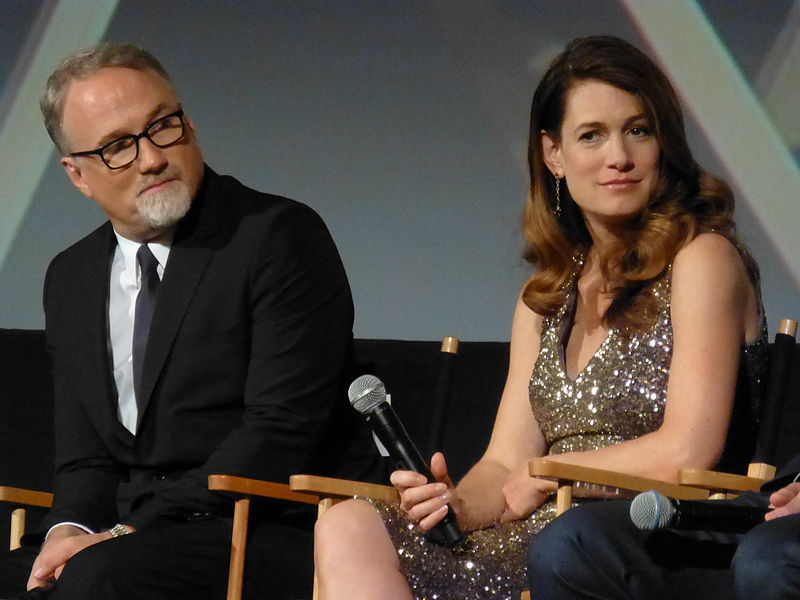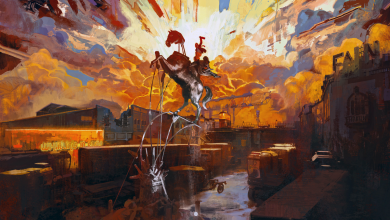The Writings of Gillian Flynn: Permitting Female Darkness in Literature
Written by: Haley Bresnahan
Like any calculating junkie running on short supply, I rationed the last book out for the pocket of time I knew I would need it most. The morning after seeing Gillian Flynn’s Gone Girl on the silver screen, I picked up her 2006 debut, Sharp Objects, and it was devoured before I could even blurt out a writhing “Hooooooowww?!! Hoooww is she so brillliaaaanntttt?!!” from the pits of my over-sized cushy chair, which now had (most likely permanent) depressions resembling the curvature of my butt. Back pain, neck cricks, nightmares and blood-shot eyes are well worth it, however, when one is enveloped in a stack of pages turned literary gold.
Trigger warning: Fan-girl piece. Just embrace it. I’ll even try hard to avoid spoilers, if you stick with me, here!
I recently had a conversation with one of my best friends during which we talked, in general, about the phenomenon of the way our minds sometimes navigate to the sinister, as though it were purely per their own accord.
“You know when you just have those REALLY fucked up thoughts that spring into your head once in a while, and you kind of just sit there thinking, ‘Where did that even come from? and then you start to question your sanity a little?”
“Ha! YES!” my friend replied immediately. “I know exactly what you mean! I always feel so sketchy when that happens!”
We had a good chuckle, and proceeded to shovel tortilla chips and guacamole enthusiastically into our mouths, deterring ourselves from sharing any specifics.
In contrast to the unspoken non-disclosure agreement between my friend and me, Gillian Flynn’s writing delivers the specifics ruthlessly and without any cushioning.
With the recent release of the film adaptation of Flynn’s Gone Girl, cultural critics and feminists have grappled with the question of whether Flynn’s character portrayals of Amy Dunne, and the leading female characters in her two other novels, Sharp Objects, and Dark Places, have misogynistic undertones.
As Flynn explained in an interview with the Chicago Tribune:
“I knew I wanted to write about women. Specifically, what was left unsaid. I never set out to do the dark side of women but I knew I wanted to write about violence. Half of all novels seem to be about men, their daddy issues, and their cycles of violence, and what was missing was a particular breed of violence that women are capable of, which is as psychological as it is physical. The truth is, women are not given enough credit for how mean and feral they can be.”
Ok. The undertones of that last sentence might sound misogynist, in isolation. A reader of Flynn’s novels, however, can justly argue that her portrayals of female characters in her are neither misogynistic, nor are they particularly empowering or admirable at face value. And therein lies the way in which Flynn is a progressive artist in her own right. It is difficult to take a leading female character from one of Flynn’s books and completely “box her in” to a specific archetype, thus proving their complex development.
With specific examples omitted so as to avoid spoilers, it can be stated that, in general, the female characters in Flynn’s novels are completely twisted, at best. Some of them are truly terrible, socio-pathic human beings. Some are mentally ill in a way that evokes a sickening medley of disturbance and empathy within readers. Some are riddled with violent tendencies described vividly enough to churn even the strongest of stomachs.
Flynn’s 2009 release Dark Places, opening line is a young girl’s attestation:
“I have a meanness inside me, real as an organ. Slit me at my belly and it might slide out, meaty and dark, drop on the floor so you could stomp on it (…) I was never a good little girl.”
Morally corrupt, sick, and sadistic as they are, Flynn’s female characters are delivered to us fully rounded. In each one of Flynn’s novels, the reader is pulled, harshly and by the hair, through the murky crevices of these women’s’ existences. None of the pictures are pleasant, pretty, or triumphant.
As Flynn bluntly admits,
“ I write nasty women. I do. But for some reason, if men do this, the character is an ‘antihero.’ I get a sense that some people feel that women need coddling, or protection from negative female characters, which is crazy. There are good female characters in my books and bad. Bad guys and good guys.”
The true, if subtle, “empowerment” for women woven into Flynn’s work is the way she incorporates a unique spin on the female existence- one we are not used to seeing in Western pop culture and literature. It is a presentation of the female character who, according to Flynn, is “allowed to own (her) darkness.”
We have all watched, ad-nauseam, how women are often presented as sex objects in movies, television, and books. In direct response to that cultural defect, feminism has done a lot to combat that trend, and it is (thankfully) a wonderful time to be a woman consuming art and literature that allows us to marvel at the female heroine. Katniss from The Hunger Games, Hermione from Harry Potter and Elphaba from Wicked have taught us that women can be strong, compassionate, kick-ass forces of nature, and we better not dare to muffle our applause for them. (Oh, and writers: Keep ‘em coming!)
Flynn’s work, however, seems to be the embodiment, or perhaps a side-effect of the transition from a cultural feminism that requires us as women to prove ourselves “worthy” of complex character development by showing how great we can be, to a cultural feminism that permits female character development that shows how utterly human women can be.
Violence, sociopathic tendencies, and mental illness do not discriminate based on gender, but one might come to that conclusion by looking strictly at western popular culture and entertainment. Whenever serial killers, murderous psychopaths, or ruthless criminals are written, they are most often men (Think Hannibal, Saw and Seven, to name a few). When writers do incorporate female violence into their work, it is often the result of a fit of passion, (think Fatal Attraction) or self-defense (think Enough). If women are portrayed as evil, it is often overly fictional to the point where we view them as caricatures or metaphors, more than real humans (think Wicked Witch of the West- before we met Elphaba, of course). Metaphors are important, especially when they are symbolic of a struggle against oppressive forces or betrayal (think Maleficent). Raw human characters, however, are just as profound and important. We should always embrace new, fresh representations of females in literature and film, so long as they are complex. We do not have to like who these characters are, but we should be allowed to hear their stories.
Perhaps the fact that Flynn’s novels have risen to such a high level of success is a sign that the pendulum is swinging, and we are moving towards a point where the lines between what constitutes femininity and masculinity (in entertainment, at least) is coagulating into a more equal playing field, one where characters can be judged simply for their actions without as much gender-based contextualization. Maybe we are reaching a point where we can meet psychotic, sinister women in a literary or cinematic setting and not have to follow up with a mandatory “Ok, yeah. She was bonkers, but remember not all women act like that.” After all, I don’t think anyone who met Jigsaw in the Saw movies followed up with a reminder that not all men are torturous masterminds who heavily mind-fuck their victims to the point that they kill themselves, and each other, as a better alternative to trying to escape his “games.” Jigsaw was just a corrupt, sick person.The fact that he was a man was irrelevant to the conversation. It should be no different for female characters.
All things considered, this is absolutely not an argument to incorporate more violent literature and art into pop culture. I always tell people I love thrillers, but only when they are done with ingenuity. If violence is incorporated, I accept it as an ingredient to the bigger picture, and I usually close my eyes during those scenes (Speaking of- the wine bottle scene in Gone Girl was bad enough in my imagination when I was reading the book. I made sure my hands were ready to play blindfold during that part of the movie. Ugh!).
We are constantly saturated with mindless violence that is presented just for the sake of presenting violence, and by no means am I rallying for more of the latter. There is the argument, however, that the presentation of violence in entertainment exists to speak the truths of human nature. If we are accepting that argument, (and by no means should we have to), we notice that women are widely left out of the discussion. I can almost hear the “humanists” in the room cheering as I conclude that people are people, and some people are horrible. Think what you will about each character in Flynn’s novels and those of authors similar to her. They are not written to win your admiration. You do not have to walk away cheering for them.
We can, however, applaud Flynn for her bold version of women’s equality in entertainment. If men are allowed to be dark, women should be granted the same opportunity. Equal is equal, for better or worse.
This article was created by a contributing author. Click here if you are interested in submitting your work.





